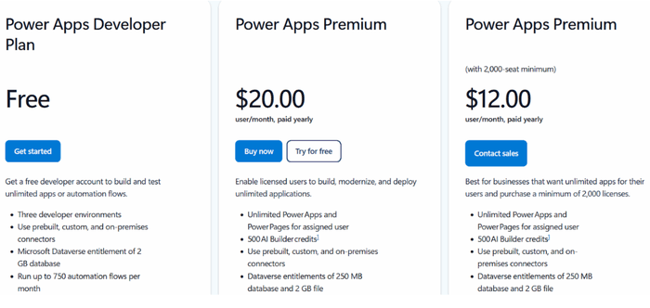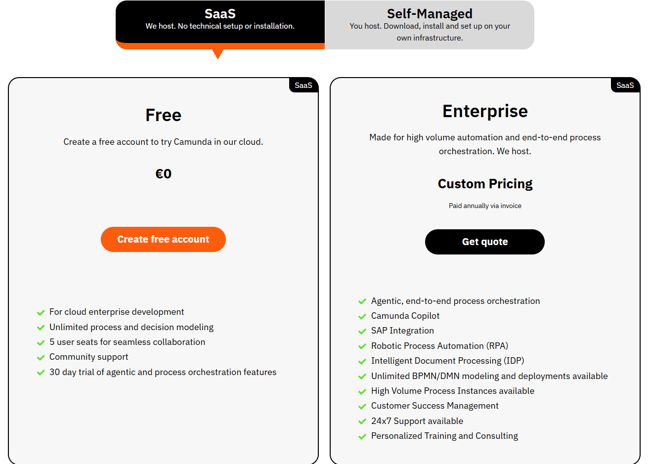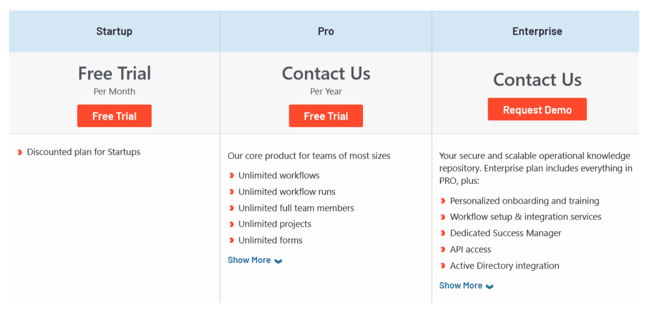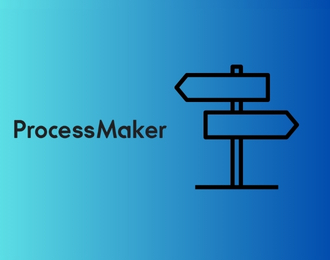Struggling with inconsistent policy tracking, manual processes, or a lack of compliance visibility? You're not alone.
Policy management is a critical yet often fragmented function, with teams battling version confusion, inconsistent acknowledgments, and siloed documentation. These inefficiencies don't just waste time; they create significant compliance risks.
In this article, we explore the top 10 policy management software that enable organisations to streamline workflow efficiency, enhance compliance tracking, improve integration flexibility, and ensure cost transparency.
We also shed light on why FlowForma stands out as a leading AI-powered, no-code process automation tool for creating, distributing, tracking, and auditing policy-related workflows.
What is Policy Management Software and Why is it Important?
.png?width=650&height=488&name=Blue%20Gray%20Minimalist%20Circle%20Teamwork%20Infographic%20Presentation%20Graphs%20(12).png)
Features of a policy management software
Policy management software is a digital platform that helps organisations create, distribute, and track internal policies and procedures in a consistent, compliant, and auditable way.
It eliminates the inefficiencies of email chains, PDF uploads, or outdated intranet portals by providing a centralised, automated system for key stakeholders.
Importance of policy management software:
- Ensures consistent employee acknowledgement
- Maintains version control and documentation integrity
- Supports compliance with industry standards like ISO, HIPAA, DORA and GDPR
- Enables automated distribution, updates, and audit readiness
- Reduced legal exposure
As industries like insurance, healthcare, energy, and construction become more regulated, the importance of policy management software grows. Manual systems are prone to human error, versioning issues, and poor visibility. A missed update or failed acknowledgement can have serious implications.
For organisations pursuing ISO certifications, GDPR compliance, or sector-specific standards, having an enterprise policy management software solution is no longer optional—it’s a strategic investment.
Learn how Aon, Marsh McLennan, and Protection and Prosperity Financial Services are automating insurance workflows for operational excellence in this recent webinar.
Best Policy Management Software in 2025: Quick Comparison
Here’s a quick overview of the best policy management software before we take up each tool separately:
|
Tool |
No-Code |
AI Automation |
Integration |
Audit Trails |
Best For |
|
FlowForma |
Yes |
Yes |
MS 365, APIs |
Yes |
Compliance-heavy sectors, mid-sized to enterprise |
|
Kissflow |
Limited |
No |
Google Suite |
Partial |
SMBs |
|
Nintex |
No |
Limited |
Enterprise |
Yes |
Document-centric workflows |
|
Power Apps + Automate |
No |
Yes (complex) |
MS Ecosystem |
No |
Microsoft-native environments |
|
Camunda |
No |
No |
Java-based |
Yes |
Dev-heavy orgs |
|
Creatio |
Yes |
No |
CRM, ERP, Custom Apps |
Yes |
CRM-driven policy management |
|
Process Street |
Yes |
No |
Zapier |
Limited |
Startups |
|
Appian |
No |
Yes |
Enterprise |
Yes |
Large enterprises needing flexibility |
|
Collaboris (DocRead) |
No |
No |
SharePoint |
Partial |
SharePoint-only orgs |
|
Cflow |
Yes |
No |
CRM, ERP |
Yes |
Small to mid-sized businesses |
Top 10 Policy Management Software in 2025
Let us break down the ten best policy management software solutions, analyse their key features, pros, and cons.
1. FlowForma

FlowForma’s homepage
FlowForma is an AI-powered business process automation platform that enables effective policy enforcement through its no-code features. It allows compliance teams to digitise and track the full policy lifecycle—from creation and distribution to read-and-sign workflows and audit trails—all within a Microsoft 365 environment.
FlowForma Key Features
- AI Copilot
FlowForma's AI Copilot empowers business users to rapidly design policy workflows by simply describing their needs in plain language. Instead of relying on IT, compliance teams can articulate "create a new policy acknowledgement flow" or “generate a process flow for insurance renewal,” and the Copilot will generate the foundational structure.
Policy creation and renewal process using AI Copilot
|
Pro Tip: Explore generating process flows for different insurance processes directly within the FlowForma insurance playground. |
- Agentic AI
Agentic AI integrates intelligent automation into policy workflows, automatically routing policies to relevant teams, tracking acknowledgement status, and sending reminders. If policies aren't acknowledged, they are escalated to managers, ensuring that no policy is missed. This feature actively enforces policies, reduces manual oversight, and provides continuous feedback for maintaining high compliance.
- Read-and-Sign Workflows
Using document management and automated workflows, FlowForma can digitally obtain and track policy acknowledgements from employees. Users can "read and sign" to confirm understanding of policies like HR or safety guidelines.
It creates a tamper-proof record of who acknowledged what and when, crucial for audits. This simplifies compliance evidence and eliminates manual tracking, ensuring accurate policy attestations.

Create seamless workflows and ensure collaboration and governance through FlowForma
- Integrated Document Management
FlowForma seamlessly connects with Microsoft 365 (SharePoint, Teams) to centralise all policy documents. This ensures policies are stored securely in one place with real-time version control, preventing outdated information.
Teams can collaborate on policy drafts within familiar tools, and approved policies are easily published and linked to acknowledgement flows, enhancing governance over all policy documentation.

Automate Your Document Generation at Scale and Enhance Governance
- Robust Audit Trails and Compliance Logging
For policy management, FlowForma automatically logs every action within a policy workflow—who did what, when, and why.
This creates a detailed, unchangeable record essential for demonstrating compliance with internal rules and external regulations (e.g., GDPR, DORA).
These audit trails simplify internal reviews and external audits, enhancing accountability and reducing compliance burden.

Support compliance in policy management with FlowForma
FlowForma Pros
- Empowers business users to manage and create policies without IT involvement
- Transparent, process-based pricing
- Intuitive, drag-and-drop interface
- Scales across departments and policy types (e.g., HR, safety, IT, legal)
- AI-driven policy and procedure management experience
FlowForma Cons
- Requires Microsoft 365 to function optimally
- May need initial guidance for highly complex compliance workflows
FlowForma Pricing
FlowForma offers process-based pricing with no hidden fees. Unlimited flows, documents, and automation are included in all tiers.
💡Real-world impact: AON case study
AON, a principal insurance broker, wrestled with fragmented, paper-heavy processes across diverse business units, leading to inconsistent operations, a reliance on cumbersome manual methods, and a critical absence of easily traceable records.
Video talking about challenges and solutions for the AON case study
FlowForma's no-code automation streamlined these challenges by standardising key workflows such as HR onboarding/offboarding, GDPR requests, and their crucial insurance vetting system into a single, centralised digital repository.
This transformation introduced essential control and transparency, ensuring consistent operational execution and generating the necessary verifiable data for stringent industry oversight.
Read more about the insurance processes you can streamline using FlowForma.
2. Kissflow

Kissflow homepage
Kissflow is a low-code workflow and approval tool designed for small to mid-sized organisations with basic policy management needs. It supports simple distribution and approval flows but is limited in compliance features.
Kissflow Key Features
- Drag-and-drop workflow designer
- Google Workspace integration
- Policy approval forms and templates
- Basic dashboards and analytics
- Workflow versioning support
Kissflow Pros
- Easy to configure without coding
- Quick deployment for smaller teams
- Affordable entry-tier pricing
Kissflow Cons
- Limited audit functionality
- Not ideal for complex compliance needs
Kissflow Pricing
Kissflow’s pricing starts at $1,500 per month for basic automation and includes support for up to 50 users.
Basic features are included in the entry plan, but AI features, integrations, and intelligent document processing are available in the Enterprise plan with custom pricing.

A look at Kissflow’s pricing page
3. Nintex
Nintex homepage
Nintex is a low-code platform built for enterprise process automation and is designed for document-heavy industries. It facilitates policy generation, includes version control, and automates distribution processes with integrated approval workflows.
Nintex Key Features
- Visual process mapping and builder
- Document automation and eSignature integration
- Policy versioning and approval workflows
- Audit trail and compliance reporting
Nintex Pros
- Scales well across departments
- Real-time dashboards and performance tracking
- Rich document lifecycle support
Nintex Cons
- Requires some IT/admin involvement to manage
- Enterprise licensing can become expensive
Nintex Pricing
Nintex has two pricing models: consumption-based and user-based.
Consumption-based pricing starts from £21,175 annually with unlimited users and workflows for both Nintex Automation Cloud and Process Manager solutions. User-based licenses start at £21,175 annually for 250 users for Process Manager and £34,000 annually for Nintex Automation Cloud.
4. Power Apps + Power Automate
Microsoft’s Power Platform
Microsoft Power Platform includes Power Apps and Power Automate for low-code app and workflow creation. While not policy-specific, it allows organisations to build custom policy distribution and approval processes.
Microsoft Power Platform Key Features
- Low-code app builder
- Power Automate for approvals and notifications
- Microsoft Teams and Outlook integration
- Conditional logic and role-based routing
- API and connector support
Microsoft Power Platform Pros
- Deep Microsoft 365 integration
- Flexible and extensible
- Customisable with developer access
Microsoft Power Platform Cons
- No pre-built policy modules
- Requires technical configuration
Microsoft Power Platform Pricing

Microsoft Power Apps Pricing

Microsoft Power Automate Pricing
Power Apps and Power Automate follow a layered pricing model. Power Apps’ pricing starts at $20/user/month. Power Automate has "Per User" plans starting at $15/user/month and "Per Process" plans starting at $ 150 per bot per month for unattended automation.
Costs can also vary with premium connectors, Dataverse storage, and AI Builder add-ons.
5. Camunda

Camunda’s homepage
Camunda is an open-source process orchestration platform tailored for developers who need full control over complex workflows. It’s suitable for organisations that want to custom-build their policy automation logic.
Camunda Key Features
- BPMN and DMN model support
- Java-based execution engine
- Task and workflow orchestration APIs
- Role-based process control
- Monitoring and analytics dashboard
Camunda Pros
- Developer-friendly and flexible
- Scalable for enterprise-grade processes
- Open-source version available
Camunda Cons
- Not suitable for business users
- Requires Java and IT support
Camunda Pricing

Camunda’s pricing page
Camunda offers tiered pricing primarily based on usage, with options for both self-managed and cloud deployments.
6. Process Street

Process Street Homepage
Process Street is a no-code platform designed around checklists and recurring workflows. It's best suited for task-oriented policy processes like read-and-acknowledge and SOP tracking.
Process Street Key Features
- Interactive checklists with conditional logic
- Approval workflows and assignments
- Zapier, Slack, and email integrations
- Run links and dynamic fields
- Exportable workflow documentation
Process Street Pros
- Easy to set up and use
- Affordable for small teams
- Suitable for SOPs and recurring policies
Process Street Cons
- No audit-ready versioning
- Limited compliance controls
Process Street Pricing

Process Street pricing plans, as seen on G2
Process Street offers tiered pricing but does not disclose it publicly. They offer Startup, Pro, and Enterprise plans, each providing different levels of features for workflow automation and compliance operations.
7. Creatio

Creatio’s homepage
Creatio is a no-code platform for process automation and CRM applications. It allows businesses to automate both customer-facing and back-office processes, including policy management, with ease.
Creatio Key Features
- Drag-and-drop workflow designer
- Google Workspace integration
- Policy approval forms and templates
- Basic dashboards and analytics
- Workflow versioning support
Creatio Pros
- Easy to configure without coding
- Quick deployment for smaller teams
- Affordable entry-tier pricing
Creatio Cons
- Limited audit functionality
- Not ideal for complex compliance needs
Creatio Pricing

Creatio’s pricing page
Creatio employs a pricing model based primarily on user licenses, with different tiers for varying scales of automation. Its core platform plans—Growth ($25/user/month), Enterprise ($55/user/month), and Unlimited ($85/user/month)—offer increasing functionality and resources.
Additionally, users can add specific product modules like Sales, Marketing, or Service for an extra $15/user/month each.
8. Appian

Appian’s homepage
Appian is a low-code automation platform designed for large enterprises requiring flexibility in policy management, compliance tracking, and cross-department workflows.
Appian Key Features
- Low-code application development
- End-to-end policy lifecycle automation
- Integration with existing IT systems
- Real-time data analytics and reporting
- Mobile and desktop user access
Appian Pros
- Scalable for large enterprises
- Advanced AI and machine learning integrations
- Support for compliance-driven processes
Appian Cons
- Requires more IT involvement compared to pure no-code tools
- Can be complex for smaller teams
Appian Pricing
Appian's pricing is not publicly displayed on their official website's pricing page. Specific costs for their subscription plans (which are often user or capacity-based) require direct contact with their sales team.
Organisations must request a custom quote tailored to their deployment needs, user volume, and chosen features like AI or RPA.
9. Collaboris (DocRead)
DocRead is a lightweight SharePoint add-on that allows organisations to assign, distribute, and track policy reading requirements. It's ideal for companies already invested in SharePoint.

DocRead Homepage
DocRead Key Features
- SharePoint-based policy assignments
- Read-confirmation and audience targeting
- Version control and publishing
- Scheduled reassignments
- Simple reporting tools
DocRead Pros
- SharePoint integration
- Low learning curve
- Affordable for small teams
DocRead Cons
- SharePoint dependency
- Lacks automation and advanced workflows
DocRead Pricing
DocRead is licensed on a "per-user" basis, meaning you only pay for the number of users who will receive DocRead Tasks. This offers flexibility, allowing you to purchase additional licenses as your project scales, irrespective of your SharePoint farm's size.
10. Cflow

Cflow homepage
Cflow is a no-code process automation tool that streamlines workflows, approvals, and document management. It is ideal for organisations looking for a simple, cost-effective solution for policy management.
Cflow Key Features
- Drag-and-drop workflow builder
- Policy approvals and document generation
- Task assignment and reminder automation
- Conditional logic for role-based actions
- Integration with third-party systems
Cflow Pros
- Simple interface with quick implementation
- No-code, accessible for non-technical users
- Flexible integrations with existing tools
Cflow Cons
- Limited enterprise-level customisation
- Some advanced features are available only in higher-tier plans
Cflow Pricing
Cflow pricing page
Cflow offers a tiered, per-user pricing model. The prices start around $11/user/month for a minimum of 10 users, billed annually. A Zen plan is also available for larger enterprises, which requires contacting their sales team for custom pricing based on unlimited users and workflows.
How to Choose the Right Policy Management Software Platform
Selecting the right policy management software solution demands a deeper evaluation than just its advertised capabilities.
The most effective solution will precisely align with your organisation's unique size, structure, and compliance obligations. Here are the most important criteria to consider:
1. Ease of use
Business users and IT teams should be able to deploy and manage policy workflows. Platforms with drag-and-drop interfaces or AI-assisted setup can facilitate easier adoption for HR and compliance teams, eliminating the need for technical support.
FlowForma’s AI Copilot helps build workflows with ease using a drag-and-drop interface
2. Process automation
Automation is a crucial feature for streamlining policy processes, particularly in highly regulated sectors like insurance and healthcare.
Look for tools that can automatically trigger read reminders, escalate overdue sign-offs, and initiate approvals based on defined user roles, ensuring consistent and efficient policy rollout and adherence while significantly reducing administrative overhead.
Watch this demo to see how FlowForma simplifies processes such as insurance underwriting to aid effective policy management.
FlowForma’s AI Copilot aiding the insurance underwriting process
3. Audit trails and compliance
The software should automatically log every interaction—who created a policy, who reviewed it, who acknowledged it, and when. These logs create audit-ready reports and demonstrate adherence to compliance standards across the entire policy lifecycle.
4. Integration capabilities
Effective policy distribution depends on how well the software integrates with systems your employees already use. Tools that connect to Microsoft 365, Slack, or legacy platforms reduce friction and increase visibility.

The benefits of FlowForma’s integration system
5. Scalability
Whether you're managing policies for a single team or across multiple business units, the platform should handle volume without slowing down. Scalability includes user permissions, workflow logic, and document load.
6. Transparent pricing
Clear, predictable pricing helps avoid operational surprises. Choose tools that offer upfront pricing.
A policy management tool should not only digitise policies but also make managing them repeatable, trackable, and scalable. The most suitable platforms will meet your organisation’s regulatory needs while supporting day-to-day usability and industry best practices.
Experience FlowForma for Effective Policy Management
The right policy management software doesn’t just store documents—it ensures policies are understood, tracked, and actioned. FlowForma delivers all that and more through no-code simplicity, AI innovation, and transparent pricing.
Unlike competitors that require developer input, lack audit trails, or come with surprise costs, FlowForma empowers your business users to drive automation at scale. Its intelligent workflow builder, Microsoft 365 integration, and strong compliance features make it the best policy management software choice for industries where accountability matters.
If your organisation is struggling with policy silos, slow approvals, or manual compliance headaches, it's time to explore what FlowForma can do.
Book a demo to see FlowForma in action.
.png) By
By 







